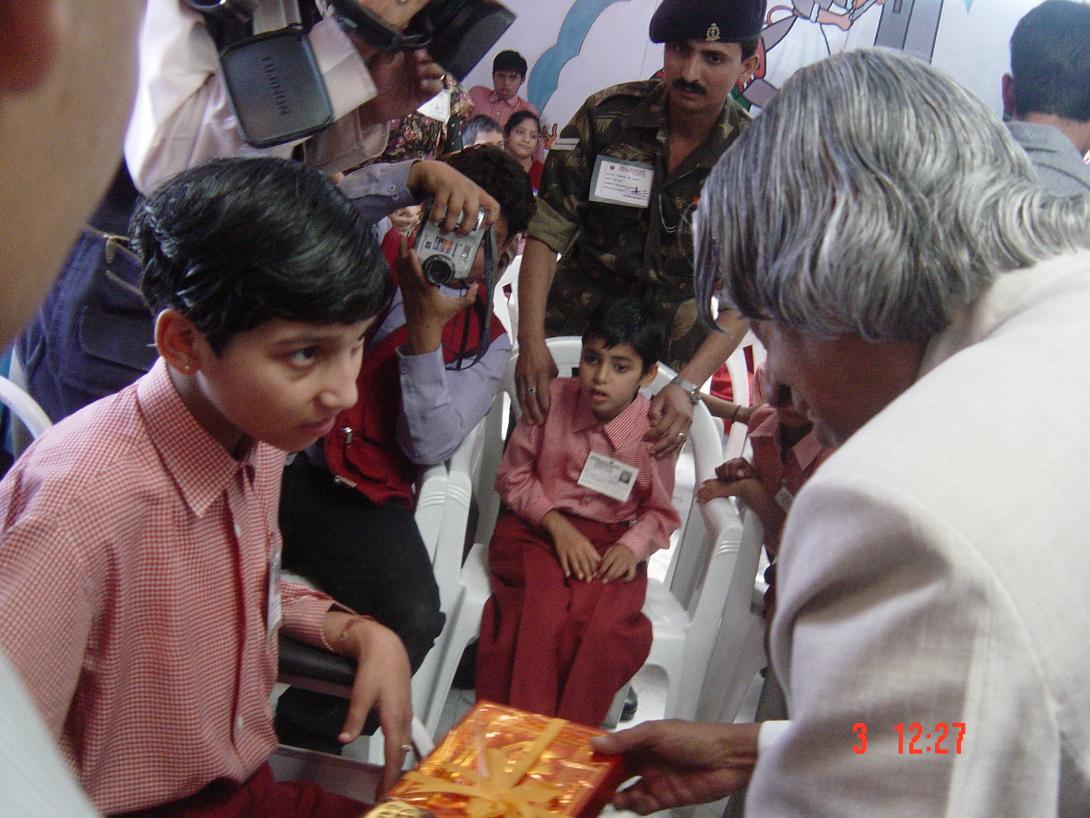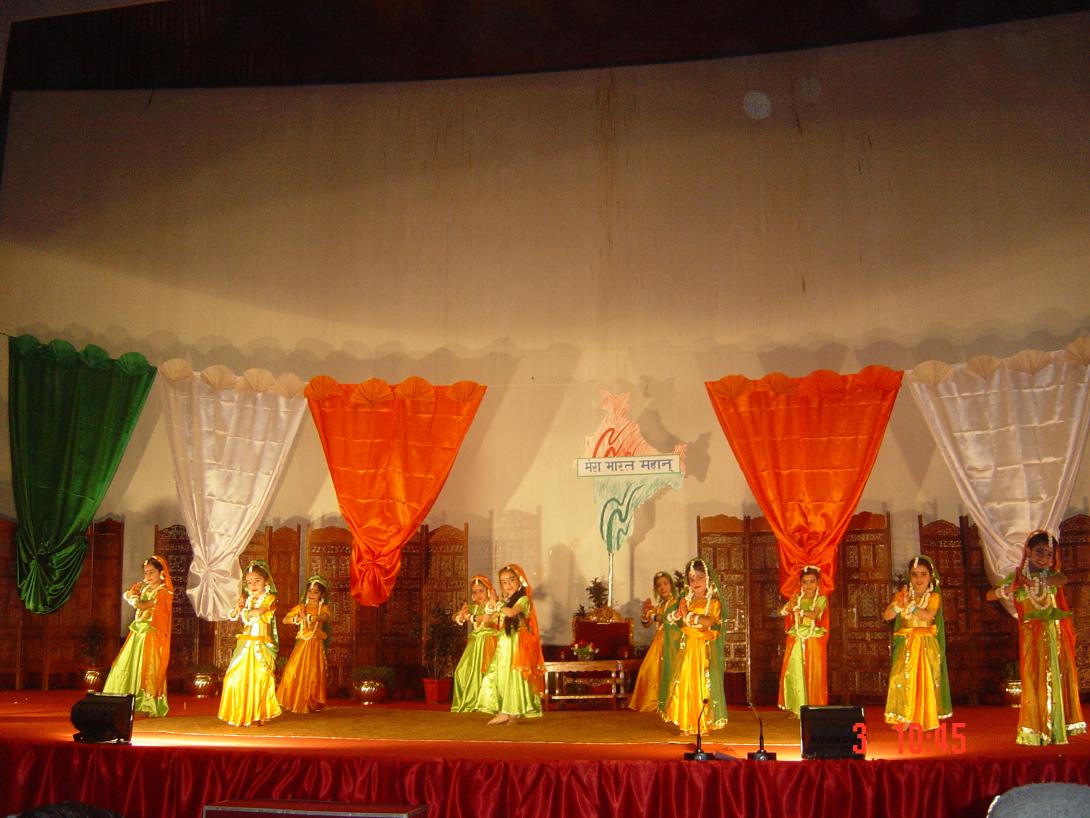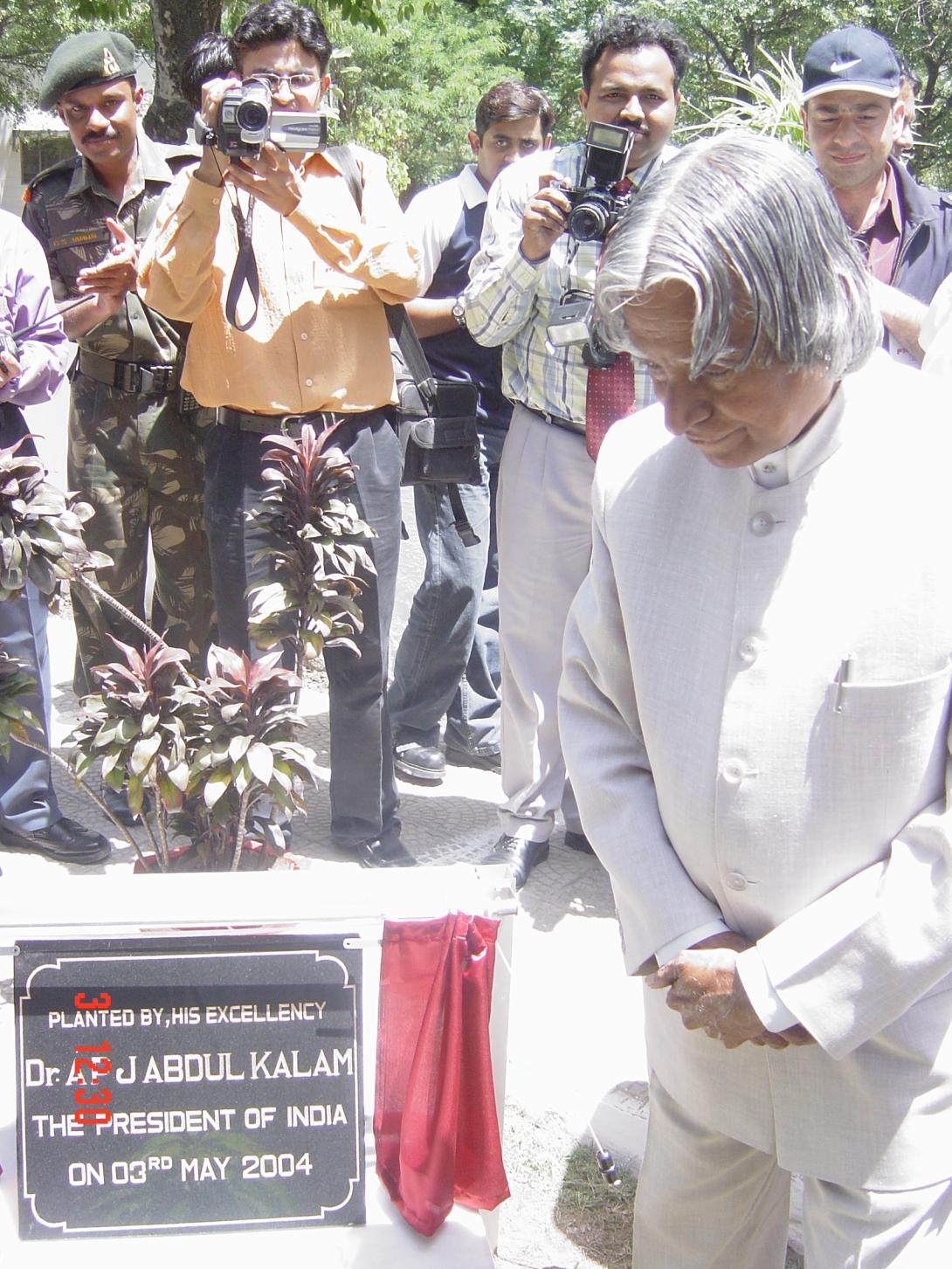Interaction With Students of Army Public School, Udhampur
Udhampur : 03-05-2004
Story of atom and Human species
I am delighted to interact with the students of Army Public School at Udhampur. My greetings to all of you.
I want to talk to you about Nuclear reaction. What is fission and what is fusion? In our country we have done both Fission and Fusion. Fission is used in power generation and nuclear bomb making.
What is Fission?
Definition: A nuclear reaction in which a massive nucleus splits into smaller nuclei with the simultaneous release of energy.
The splitting of a heavy nucleus into two roughly equal parts (which are nuclei of lower-mass elements) accompanied by the release of a relatively large amount of energy in the form of kinetic energy of the two parts and in the form of emission of neutrons and gamma rays.
What is Fusion?
The Principle is a nuclear reaction in which nuclei combine to form more massive nuclei with the simultaneous release of energy. Lots of research is going on to use fusion for power generation.
The basis of all of these is the Einstein?s discovery: E= mc2.
Number of elements
Do you know how many elements are there in the world? In periodic table, the first one is Hydrogen. It has only one electron and one proton. It cannot stay in a stable state by itself. It can combine with another Hydrogen atom to form H2 or Two Hydrogen atoms can combine with one O atom to form H2O, which is water.
Thorium has the Atomic Number 90. Uranium for example has the atomic number of 92 and Atomic weight of 238. Plutonium; atomic Number is 94 and Atomic weight 244.
These heavy metals are used in making and mastering atomic energy. Do you know what you are made up of?
Cells ? Molecules- What are these made up of? Atoms.
How many atoms are there in the world? As per Periodic tables there are 109 named elements and 3 unnamed, so totally 112.
Constitution of human being
How many atoms you are made up of? Trillions. You have mostly carbon, Hydrogen nitrogen and Oxygen, You also have a bit of Calcium, sulphur etc.
I also have the same thing. Our ancestors also had the same type of atoms. Animals also have similar type of atoms. The non-living tables, chairs are also composed of atoms. The atoms that are arranged and sequenced to make you, is unique combination that will never be replicated and never had existed before either.
Some of the trillion atoms that are in you may have come from Mahatma Gandhi, from people whom we may not even know, may have come from some plants, even some animals or non living things like a rock etc. Is it not amazing that different arrangements of atoms make different things? From living to non-living, from one species to another species, with very different and unique characteristics, even within the same species.
Life of species
Most species live generally for 4 million years. But atoms live for several trillions of years. Take the Acorn seed. It has dreams of becoming a big Oak Tree. These dreams of how it will look like when it becomes an Oak tree is already written in the Acorn itself. This is the genetic code. This is what distinguishes from living arrangements of atoms and non living arrangements of atoms. Though it is written in every Acorn how and when it will become an Oak tree, it is not necessary that every Acorn will become a tree. The chances are one in 10,000. Others will fail to make it due to environments; they may even be consumed as Acorn themselves.
What inspires you?
All of us know about Kalpana Chawla, the first Indian woman to go in space. She is a great source of inspiration for all our youngsters. She used to say that she is a daughter of the galaxy. She said, inspiration comes to her every day from people in all walks of life and that she is inspired and motivated by seeing somebody who just goes all out to do something. She was particularly inspired by the amount of efforts put by her teachers to carry out their courses, the extra time they took to do experiments with the students and also just the compliments they used to give the students for coming up with ideas, new ideas. She was also inspired by explorers, probably that is the reason she was so thrilled to go on exploratory mission.
Indomitable Spirit
For success in any mission what we need is indomitable spirit. Let us study the characteristics of indomitable spirit. It has two components. The first component is that there must be a Vision leading to higher goals of achievement. I would like to recall a couplet from Thirukkural by the Poet Saint Thiruvalluvar written 2500 years ago, which says
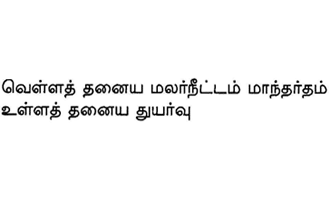
It means, whatever may be the depth of the river or lake or pond, whatever may be the condition of the water, the lily flower always comes out and blossoms. Similarly, if there is a definite determination to achieve a goal even if it is impossible to achieve, the man succeeds.
Many of us have gone through large programmes and projects. We would have experienced that success is not in sight and there are many hurdles. The same poet reminds us at this point of time through another couplet:
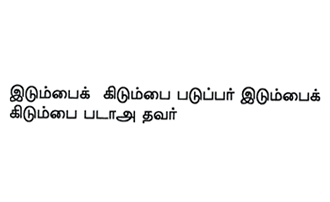
It means successful leaders can never be defeated by problems. They become master of the situation and defeat the problems.
I consider these two Thirukkurals characterize the indomitable spirit.
What can I do for you?
Every one of us has gone through the various phases of education from childhood to profession. A scene appears in front of me. A child, a teenager, an adult and a leader. How does each one react to a particular situation? The situation is human need. The child asks, "What can you do for me"? The teenager says, "I want to do it alone". The young person proclaims, "let us do it together". The leader offers, "What can I do for you". So, the principals have got a tremendous responsibility to transform a child into a leader - the transformation of 'what can you do for me' to 'what can I do for you'. That will demand a principal to be a visionary with an inspiring capability. Also the principal has to ensure that teachers impart learning to the children in such a way as to bring out the best in them and for this, he has to be a good teacher himself. I am sure, the best of creativity among the students will emerge by integrated influence of principals, teachers, and parents on students.
Now, I would like to answer some of the questions asked by you.
Questions and Answers
1.I watch National Geographic and Discovery Channel in which many people talk about their discoveries, but Indian name has never appeared there. Why so?
- Akansha Bajpayee, Class VII D
Ans. Our scientists and technologists should present their inventions and discoveries. For example, there is a National Innovation Foundation; every year 300 to 400 innovators are selected out of 20,000 proposals. Annually they meet and present their work, they are rewarded. Cross section of the people comes from universities and colleges, industries and individuals. Similarly every year India gets 200 to 400 patents in the areas of Engineering, design, electronics and farming. A method has to be evolved to present the innovations periodically. We must have an electronic channel to present and discuss these innovations with the young.
2.What is your native place? Have you ever visited that place after becoming the President? Do you have same relation with your friends and the people there as you had before becoming the President?
- K Naga Deepika, VII D
Ans. My native place is Rameshwaram. I have not yet visited after becoming the President. My elder brother aged 87 and other members of the family are all in and around Rameshwaram Island. I will be visiting shortly, but my relatives visited me in Rashtrapati Bhavan and stayed here for few days.
3. You designed one missile, then what inspired you to design 5 more, when need of the hour is peace?
- Viplove, VIII D
Ans. My team and I, in ISRO built India?s first satellite launch vehicle and successfully launched. You know ISRO programme is completely directed towards national needs of a common man ? like communication satellite, remote sensing satellite, meteorological satellite etc,
In DRDO, I initiated the development of 5 missiles of various types. Particularly these strategic missiles, nobody will give us, we need to develop ourselves. And also, all our borders are equipped with the weapons. India spends a small amount for defending the nation. By securing the nation, development activities will continue without any interruptions. What we spend in defence is to bring peace.
4.Mr. President, my question to you is: You are the President of India as well as a Scientist. How do you handle both?
- Aishwarya Jandial, VII B
Ans. I allot some time for science and research work. I guide a few research students. Recently, we had a one-day discussion meeting on Nano Science and Technology which was attended by over 40 scientists, technologists and industrialists working in this futuristic area. By suitable planning, it is possible to handle multiple tasks in a focused way.
5.Everyone is aware that in your youth, your ambition was to become a pilot. Now, after reaching these staggering heights, if you look back, do you regret destiny?s decision?
- Ashish Kumar Singh, XII B
Ans. Even now, whenever I see an Air Force officer, with the Flying insignia, it reminds me I couldn?t get it. I feel sad.
6.You are the only President in the history if India who has come from the field of science. Do you really have an interest in Politics?
- Ashish Raina, VIII B
Ans. The president of India has been elected by the Political system. So far philosophers and politicians have been elected. Definitely President needs to have the knowledge of political system. That I have already acquired. My main mission is to see that India is developed by 2020. That means India has to become economically strong.
7.What was your ambition when you were of our age and who was your ideal?
- Neerja K. Hari, IX B
Ans.My ambition was to work in an area which has something to do with flying. I was motivated by my fifth class teacher Shri Siva Subramania Iyer, who taught me through practical examples, how birds fly.
8.What do you like to do in your free time?
- Monica Lamba,IX B
Ans.I listen to Carnatic Music, both instrumental and vocal. Reading and writing books and poems.
9.What do you expect from the future generations?
- Shikha Abid, IX B
Ans. Future generations should have a dream and work for transforming India into a Developed Nation. As a student you can contribute by fixing a goal in your life, concentrate to combat, overcome the hurdles and achieve excellence. Student must imbibe moral values. They should aspire to become entrepreneurs. During holidays students can teach who can not read and write and underprivileged children and create a mission for them. They can plant trees and contribute towards improving ecological balance. These activities will collectively lead towards development and prosperity.
10.As the population of India is increasing, unemployment is also increasing. What are your plans to overcome poverty and unemployment?
- Nidhi Bali, X A
Ans. To meet the need of one billion people and alleviate poverty and illiteracy, we have the second vision of transforming India into a developed nation by the year 2020. We have identified five areas where India has a core competence for integrated action: (1) Agriculture and food processing (2) Reliable and quality electric power and surface transport for all parts of the country. (3) Education and Healthcare (4) Information and Communication Technology and (5) Strategic sectors. These five areas are closely inter-related and if well done would lead to national, food and economic security. Also a rural development programme called PURA (Providing Urban amenities in Rural Areas) envisages for proving physical connectivity, electronic connectivity, and knowledge connectivity thereby economic connectivity. PURA enterprises will generate number of entrepreneurs who will become employment providers instead of employment seekers.
I wish you all success in your missions.
May God Bless You.

